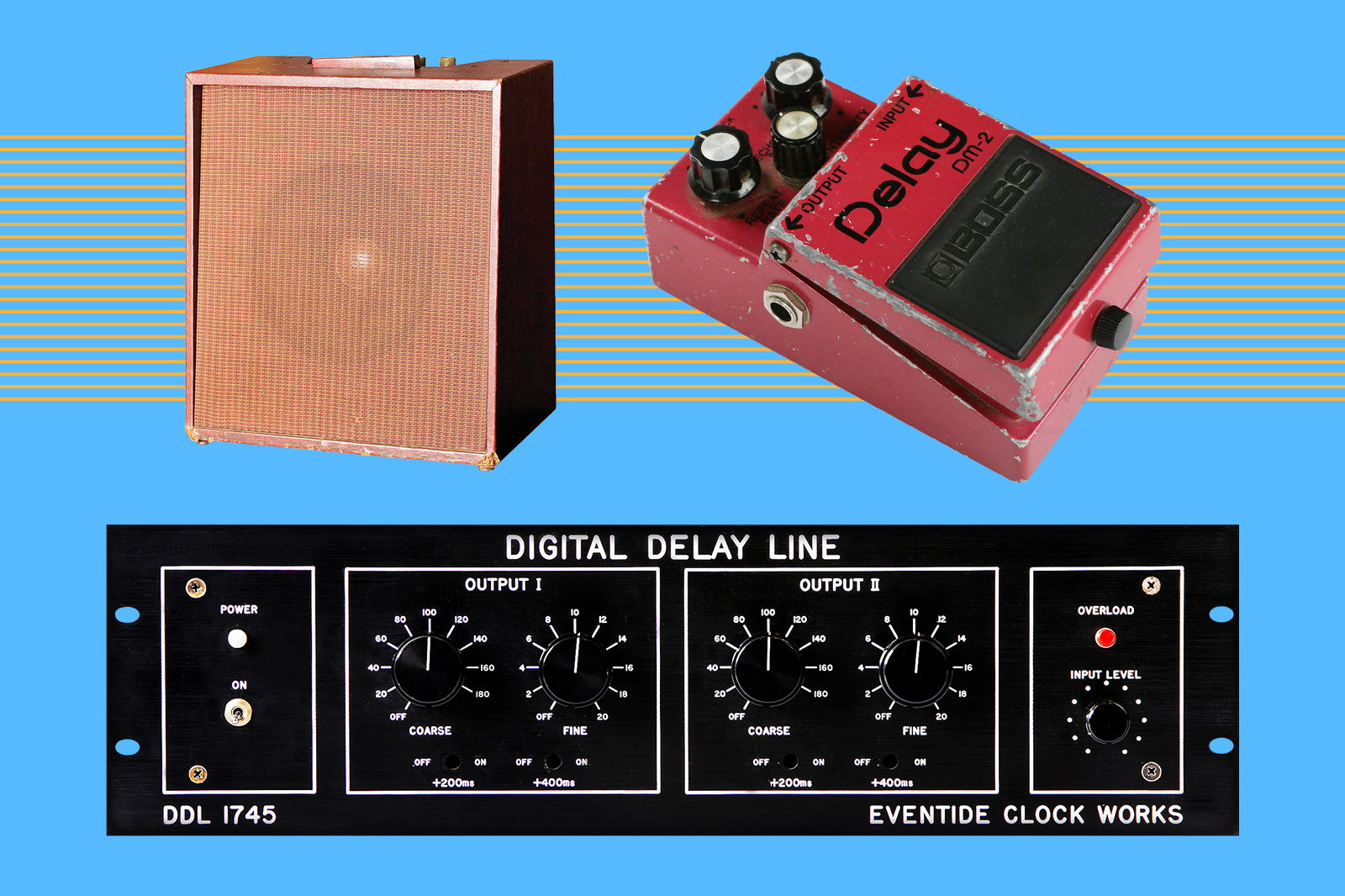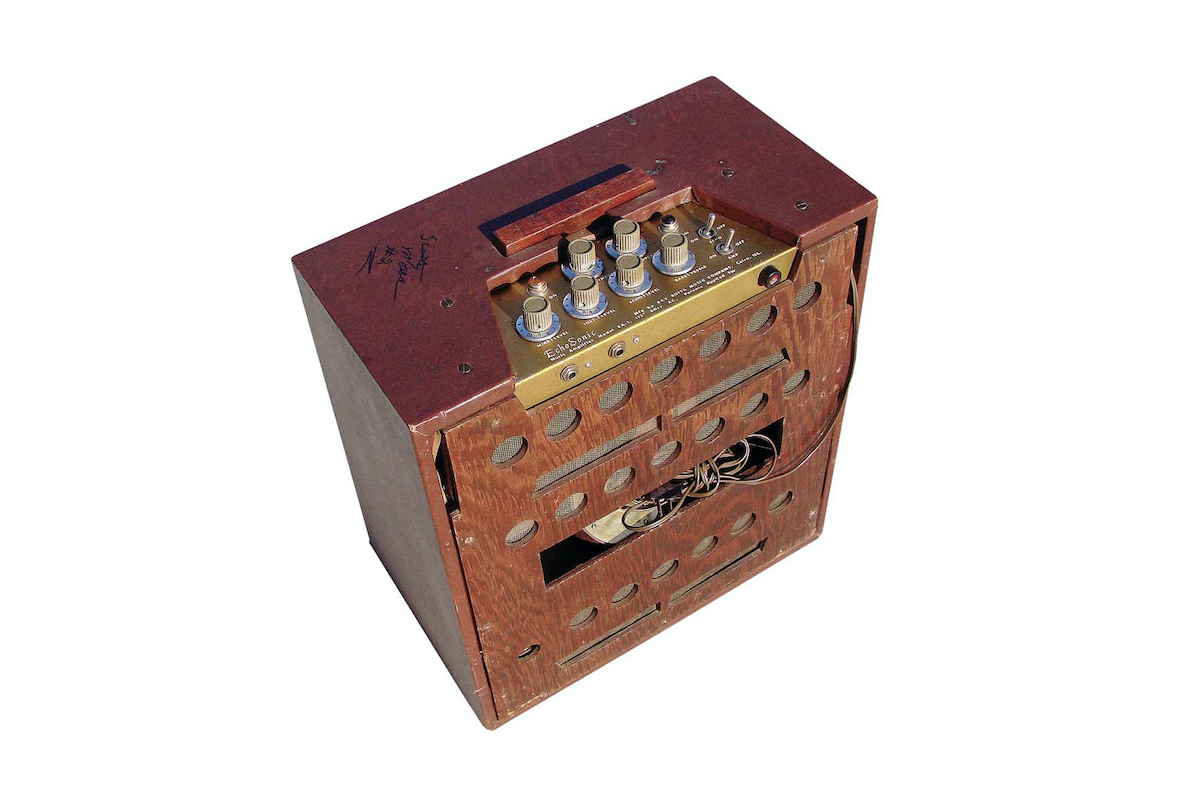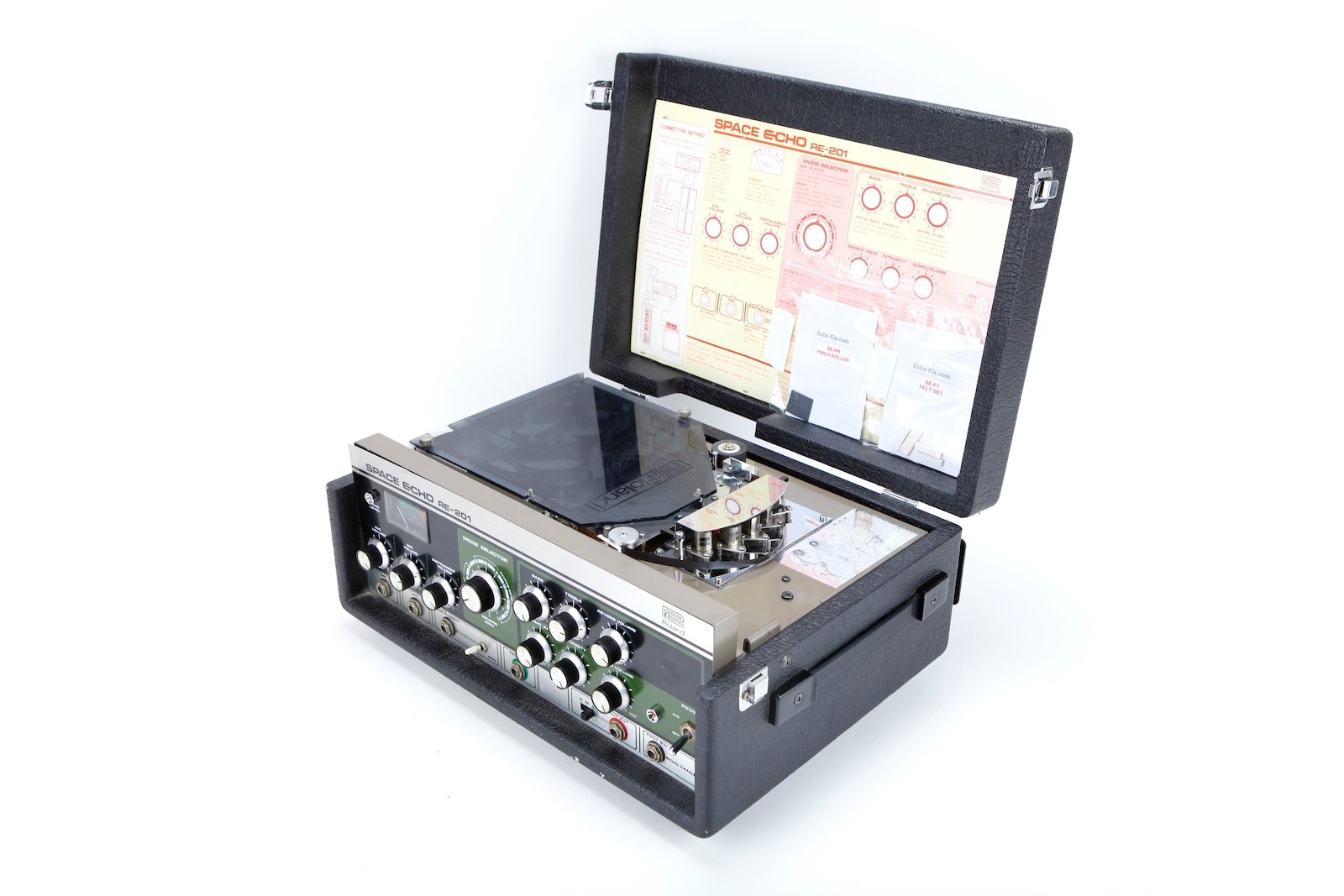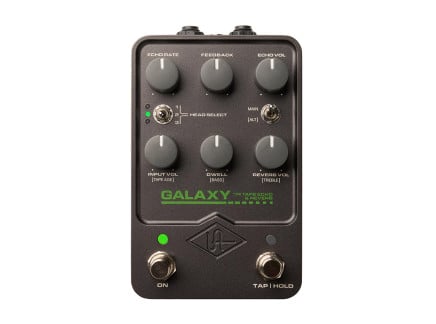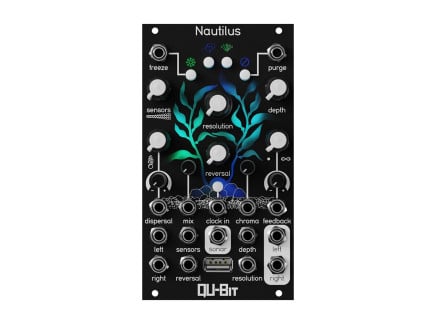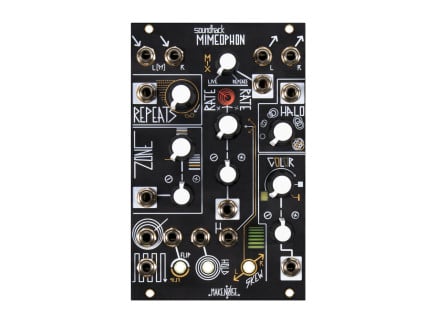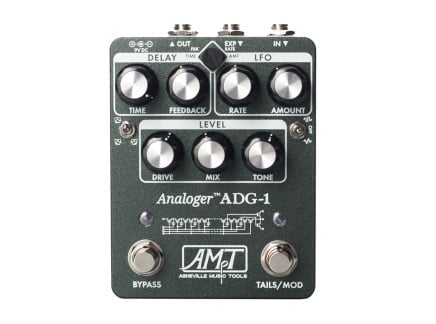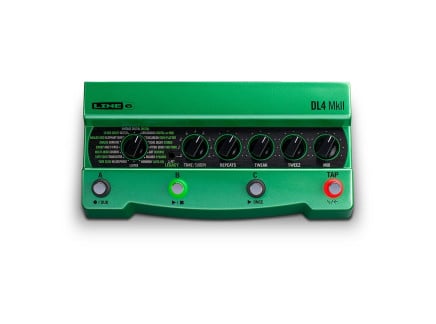Delay in audio production, at its simplest, is capturing an audio signal and repeating it after a certain length of time. In other words, you are repeating an audio signal after a certain amount of "delay"—and hence, the name. Today, the audio effect is as ubiquitous as selfies on Instagram, but that wasn’t always the case. In fact, the history and evolution of delay is quite a story.
The Origins of Delay: Tape Delay
It all started in the 1940s with the advent of magnetic tape as a storage medium. A writing head stores magnetization patterns on the tape, which can be any kind of information, including audio. This information can be played back using a read head. In the studios of the '40s, engineers and artists started experimenting with feeding instrument signals, vocals, and found sounds into a tape machine and having them play back after a delay of several milliseconds. And hence, tape delay came into existence.
The amount of delay between the original signal and the recorded signal was determined by the distance between the record head and the play head on the tape machine. Sometimes two machines were used—one for recording the audio and the other for playing it back. Pierre Schaeffer was one of the early pioneers of the tape delay technique. A little later on, composers Louis and Bebe Barron used the technique to great effect on the score for Forbidden Planet, an MGM sci-fi classic.
Tape machines were bulky contraptions, though, which were hard to transport—and of course, while they were tools for recording music, they weren't necessarily musical instruments in their own right. That changed in the '50s, with Ray Butts and his now iconic EchoSonic guitar amplifier—of which very few were produced (pictured above—images via Vintage Guitar Magazine). This seminal device gave rise to the slapback echo effect that can be heard across records from the '50s. In fact, the slapback echo came to define the rock sound of the era, and still conjures strong associations with the era.
Other manufacturers caught on to the trend and soon produced dedicated tape delay devices such as the Echoplex and Copicat, which were much smaller than their original inspiration, the EchoSonic. These devices ditched the guitar amp format, and had multiple playback heads, so you could get more repeats or rhythmic repeats. As manufacturers continued to innovate, the early tape delay machines began incorporating movable tape heads, which meant you could control the delay times on the fly.
But the next big revolution in tape delay came with the advent of transistors in the '60s. Transistors allowed engineers to house electronic circuits on small chips. This meant that the bulky vacuum tubes could be replaced with much smaller electronic components. As a result, tape delay machines got even smaller and more portable, which led to one of the first legendary tape echo machines, the Space Echo series by Roland.
The RE-201 Space Echo (pictured above), in particular, is what changed the game with its longer tape length. The device had three playback heads for multiple repeats. It also combined tape delay with spring reverb for a more spacious sound. Owing to its impressive build quality and a (relatively) portable size, musicians could travel with it on the road and play with it live. (Note: if you want to learn more about these iconic tape delays, we strongly recommend checking out our dedicated article A History of the Roland Space Echo.)
Other Novel Approaches to Echo Effect Design
Alongside the tape delay experiments of the '60s, another manufacturer was experimenting with tapeless echoes. Tel-Ray, an iconic electronics company of the ‘50s and ‘60s, was making so-called oil-can delays. As the name suggests, contraptions that looked like cans were filled with electrolytic oil. A pickup mounted on a rotating flywheel sloshes about in the electrolytic oil. The flywheel itself is driven by a tiny motor. The pickup acted like a record head and as it sloshed about in the oil, it created warbly echoes. Called the "Adineko Memory System," the esoteric technology was licensed by Tel-Ray to several guitar manufacturers in the ‘60s and ‘70s, including Fender and Gibson. Owing to the mechanism used for producing echoes, oil-can delay had a peculiar sound that was a mix between imperfect vibratos and reverb.
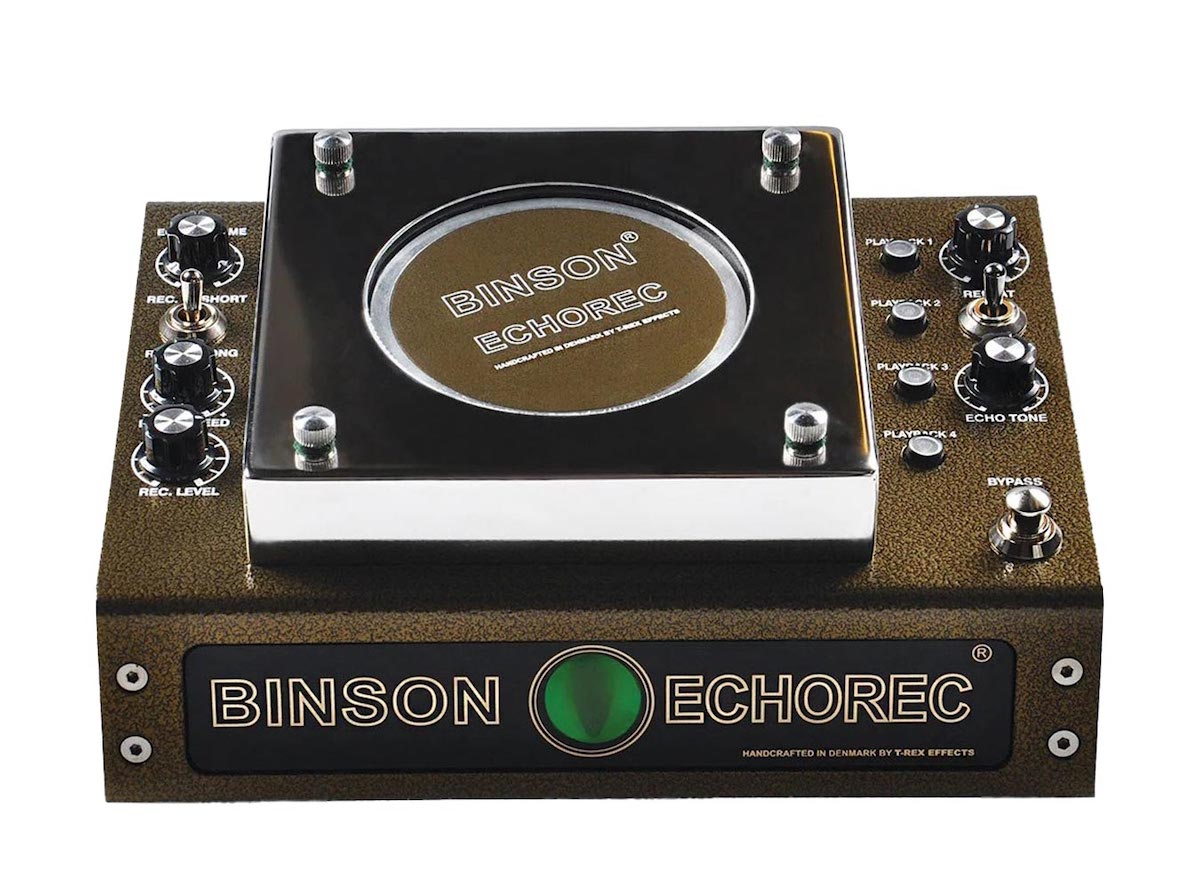
Another tapeless echo technology that was emerging during this time was the drum delay. Created by Binson, an Italian electronics manufacturer, it used magnetic recording wire wrapped around a rotating steel drum or disc. A record head and four playback heads were placed on the circumference of the drum. Unlike magnetic tape, the steel drum was less susceptible to wear and tear. And there was no noise from magnetic tapes, either, resulting in a higher fidelity sound compared to tape delays. In fact, Echorec—the name given to the drum delay device by Binson—was used by Pink Floyd until the late ‘70s. It defined the legendary band’s sound in their early years. (Note: a modern recreation of the Binson Echorec produced by T-Rex Effects can be seen above, and is available for purchase here.)
Bucket-Brigade Device (BBD) Delay
The ‘70s was also the time when another delay technology came to the fore, the bucket-brigade delay. Philips, the electronics giant, invented a bucket-brigade device for data storage. Made up of capacitors, the technology had severe technical limitations to be used as a reliable storage medium. As a result, Philips licensed the technology to other chip manufacturers, including Panasonic (known as Matsushita in the ‘70s).
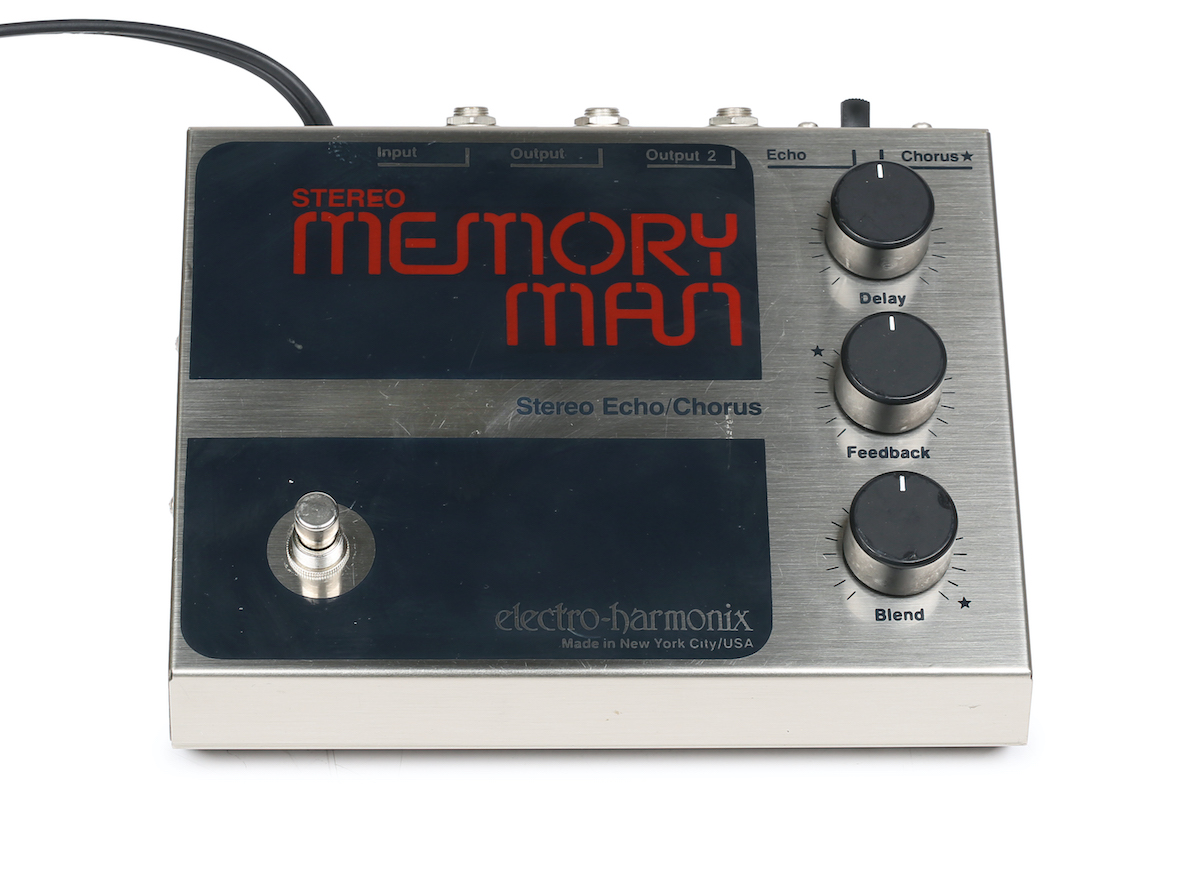
The Japanese manufacturer released their BBD chip, the MN3001, which would later become a seminal chip for BBD-based delay effects. Soon, other manufacturers followed suit, including guitar equipment manufacturers, and the market was flooded with an array of BBD delay devices. This included the noteworthy Memory Man by Electro-Harmonix (which you can read much more about in our article all about the history of the Memory Man). First manufactured in the late ‘70s, the stompbox has since become a staple for several bands, including U2.
Contrary to the popular notion, though, BBD delays arguably are not strictly analog devices. Instead, they are a blend of analog and digital technology. BBD delays function on the concept of shift register. Capacitors are arranged in series. Audio signal passes from one capacitor to the next until it reaches the output. A dry signal is passed directly to the output, where it is mixed with the wet signal to create echoes. The amount of time it takes for the wet audio signal to pass through all the capacitors is determined by the clock rate of the device.
[Above: the Boss DM-2 delay pedal, a BBD-based delay now prized for its particular flavor of noise and sonic nonlinearities.]
Talking of clock rates brings us to an "imperfection" with BBD delays. Back when they first came up, BBD delays had a steep low-pass filter to eliminate high frequency noise. They were susceptible to high-frequency noise, particularly when the clock rate was slowed down to create longer delay times. On the upside, the steep low-pass filter gave BBD delays a warmer tone, much like tape delays. On the downside, despite the steep low-pass filtering, you could only get delay times upto 300ms in length before discernible noise started creeping into your sound.
BBD delays defined the rock sounds of the ‘80s. The clock rate of the devices could be modulated to create choruses and flangers. In fact, it was the Deluxe Memory Man by Electro-Harmonix that really caught the fancy of guitarists around the world. The BBD delay stompbox had an LFO to modulate the clock rate, which resulted in pitch-shifted, warbling, chorus-like delay effects.
The Dawn of Digital Delay
While engineers were still busy ironing out the “flaws” of BBD-based delays, Eventide was working on another groundbreaking technology. The American electronics manufacturer designed the very first analog-to-digital converter, which paved the way for one of the first rack mountable digital delays, DDL 1745 (learn more about Eventide's rich history in this article). The device (pictured below) was quite expensive, which made it unfeasible for gigging musicians. But despite the high price tag, studios lapped it up.
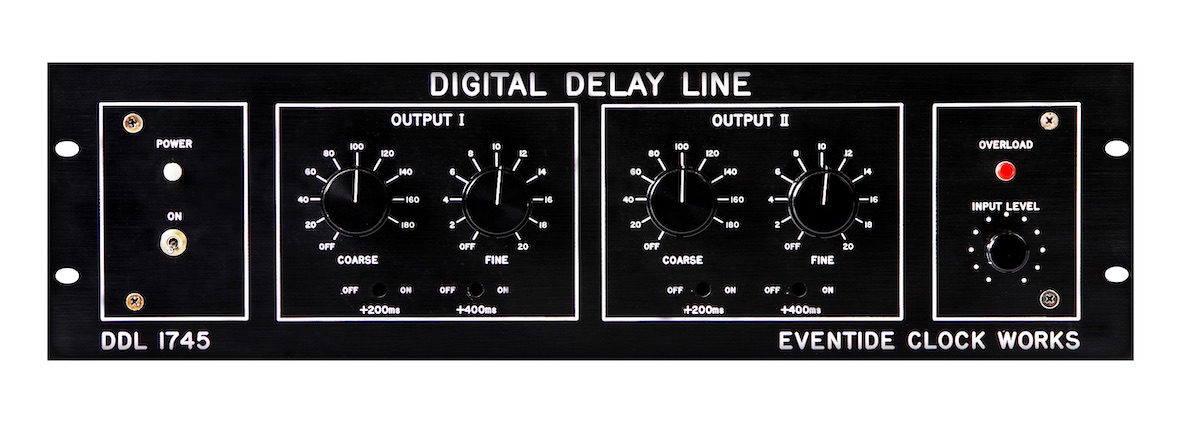
With digital delay, automatic double tracking—a commonly-used technique for thickening up audio signals—became less expensive and less cumbersome. You no longer had to monitor your tape devices closely when recording to make sure they didn't run out of tape. You didn’t have to store spools of tape, either, doing away with the need for physical storage.
Even when compared to BBD delays, digital delays offered a lot more room for sonic creativity. There was lower distortion, a significantly lower noise floor, and a much wider dynamic range. Soon, creative musicians and engineers realized that effects such as pitch shifting, freezing, and reversing were also possible.
Despite the many creative and high-fidelity advantages of digital delays, they were restricted to big studios. And It took more than a decade after DDL 1745 for more affordable digital delay pedals, such as Boss DD-2 (or the DD-3, a later rebranding of the same pedal—pictured below), to come to market.
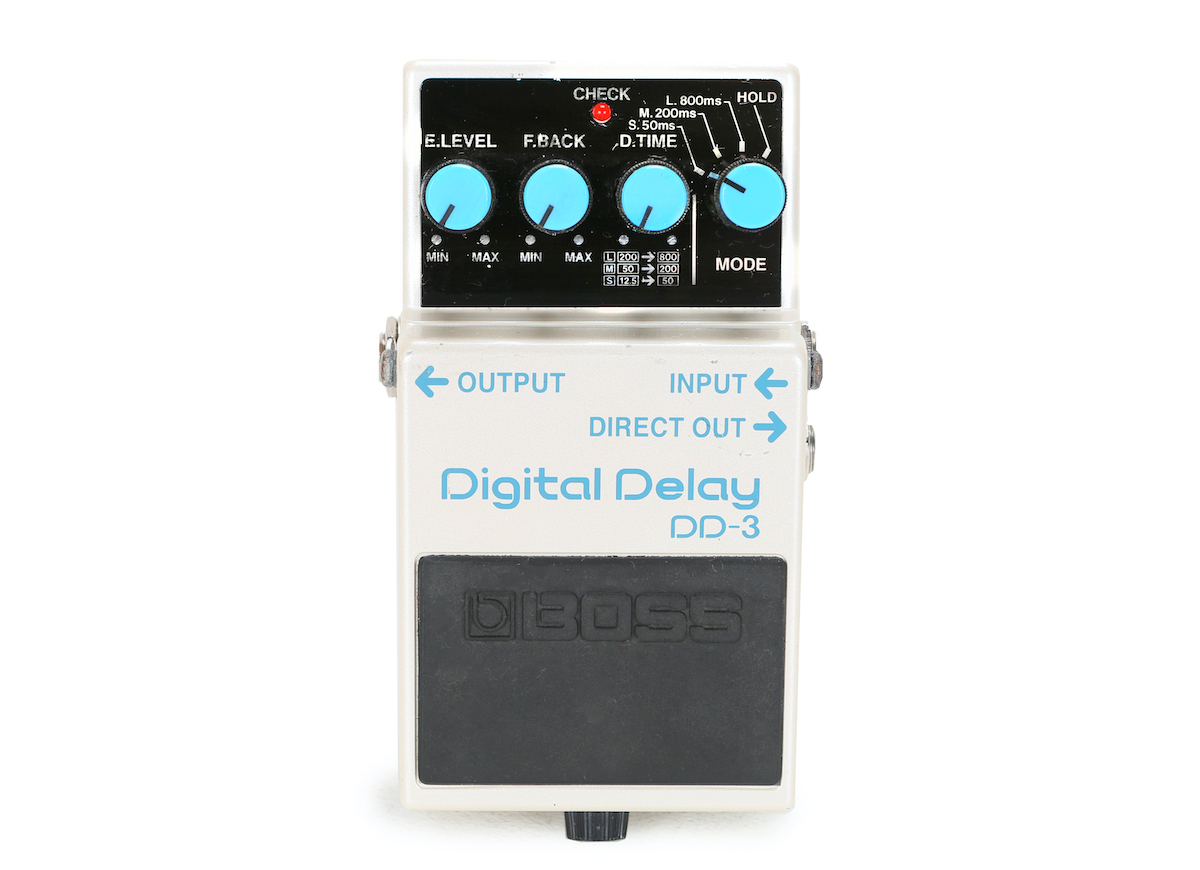
Digital delays are a lot more flexible, hi-fi, and clean compared to tape delays and BBD delays. But the digital territory comes with its own set of drawbacks. Aliasing, offset errors, and jitter are some common problems that engineers run into in the digital world. These are undesired effects that lead to sonic artifacts that are not musical. In that sense, they are different from the artifacts of analog technology, such as the sharp high-frequency rolloff in BBD delays.
Happily, over the years, engineers have found solutions to most of these problems—and today, digital delays can sound every bit as smooth, characterful, and nuanced as their analog counterparts.
Modern Day Delay Pedals
We have come a long way from the early days of tape delays in the ‘50s. Today, there are digital pedals that are emulations of analog technology from back in the day. They give you the advantages of the digital world while recreating a lot of grit and texture of the analog world. There are pure analog delays, too. These are inspired from early day tape delays and BBD delays, whilst being more robust and predictable than their predecessors.
We have rounded up some interesting hardware delays that are inspired from all the delay line technology that has led us to this day.
Universal Audio has faithful emulations of classic tape echoes and BBD delays of the ‘70s. The Galaxy is an emulation of the cult classic, the Roland Space Echo. On the other hand, Starlight has three different flavors of delays built into it: tape delay, BBD delay, and digital delay. You can get really close to recreating those dreamy textures of the ‘70s with Universal Audio’s precise algorithmic modeling.
Echo Fix started out by repairing old Space Echo machines. Today, the company builds robust hardware that combines analog tape echo, BBD delays, and DSP-based effects. For example, EF-X3 recreates the magic of RE-301. It is a completely analog device from start to end, including the use of physical tape loops.
Several pedals by Strymon are inspired by old-school delay line technology. El Capistan recreates classic tape echoes and spring reverb. You can also dial-in some vintage imperfections by emulating deterioration of tape. Volante has three different flavors of delays: drum echo, inspired from Binson’s drum delay; reel-to-reel echo; and tape echo.
The Asheville ADG-1 is a pure analog delay pedal with two MN3005 BBD chips by Xvive. Modern chip design and high-quality compander circuits give you high-fidelity sound in a BBD delay. Asheville ADG-1 can give you delay times of upto 700ms, which is a lot in BBD territory. Designed by the folks behind the Moogerfooger MF-104 delay, the ADG-1 is easily one of the best pedal format BBD delays available today.
Digital delays offer a lot more room for creativity. And that’s where Raster 2 by Red Panda shines. The digital delay pedal gives you pitch-shifting delay with a feedback loop that can go beyond infinity into chaotic territory. Similarly, Meris's LVX exploits the flexibility of the digital world to the maximum. The stereo delay pedal gives you complete control over the number of delay lines. You can configure the pedal to function as a multi-tap delay (similar to BBD delays), magnetic tape delay, pristine digital delay, and a lot more.
Be sure to check out our Delay Pedal Buying Guide for even more excellent pedal-format echo effects!
Eurorack Modular Delay Processors
Of course, delays aren't just for guitar pedal aficionados: they also crop up in modular synth formats as well. A digital take on various old-school echo and delay devices, Mimeophon by Make Noise takes digital delay to new territories. The Eurorack module lets you modulate space, timbre, and time of incoming audio. You can create warm ambiences, vintage textures, or go into wild sonic territories with this one.
Modern digital technology lets you include multiple delay lines without exorbitantly increasing the cost or size of the device. Inspired by the never-quite-completed Buchla 288 Time Domain Processor, the Verbos Multi-Delay Processor is a complex digital delay module in the Eurorack world. The eight-tap delay has individual level control for each tap and several outputs that can be routed for feedback patching. Qu-Bit's Nautilus takes advantage of that with its eight delay lines that work together. The Eurorack module has a fresh take on echoes, relying on complex feedback networks between the various delay lines and other parameters.
The Eurorack options we've listed so far all rely on digital technologies—but if you need an analog Eurorack delay module, the Xaoc Devices Sarajewo uses three BBD chips and can give you delay times of upto 1560ms. It has an external clock input, tilt filtering for controlling the dynamics and individual outputs for the three delay taps.
Of course, these are a small sampling of the options out there: delay is one of the most ubiquitous audio effects out there, and there are countless options for those looking to add a little echo to their sound.
How to Shop for Delay Effects
Consider the tonality you want as the foremost factor when shopping for delay effects. Are you going for the saturated warmth of tape echoes? Do you want to work with the filtered sound of BBD delays? Or are you going for something more pristine and clinical? For the last one, you should look in the digital delay territory.
The form factor counts, too. But more importantly, are you ok with the idiosyncrasies of the analog world? If you aren’t, you might want to stick with digital emulations of some analog classics, such as Galaxy by Universal Audio.
We have a lot more options today compared to the ‘70s and the ‘80s, which is a good thing—if you explore, you'll no doubt find a delay that suits you and your music.

